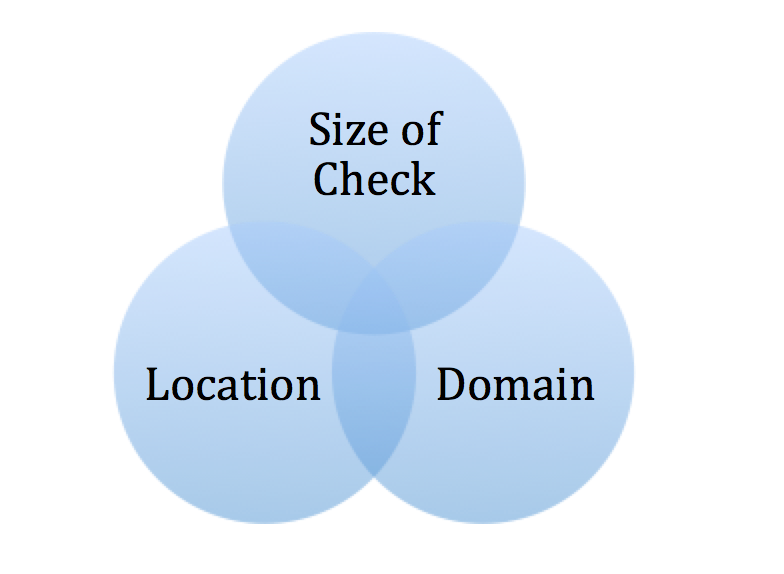Differences Between Raising Seed and Series A Rounds
Yesterday I was in a discussion on Twitter with Semil Shah and Marc Andreessen about the value of a pitch deck. Marc thinks that the pitch deck has to be well polished and Semil and I think that a bad pitch deck with an awesome presentation by a passionate founder is ok for a seed round.
That was the critical differentiator: the round. If you look at the conversation, Marc and I are in agreement on the need for a quality deck, we just disagree on the stage. This got me to thinking of the main difference between raising a Seed round and a Series A round.
As several Fresco Capital portfolio companies are currently raising a Series A or have just completed one, the difference between Seed and Series A is fresh on my mind (hence why I felt bold enough to challenge an icon like Marc yesterday..)
If you remember from my previous post, typically when you are raising a Seed round you don’t have your product-market fit figured out, nor do you have the exact facets of your business model ironed out. You typically figure this out during your Seed round and execute on your business model in a Series A.
Raising a Series A round is very different than raising a Seed round. Seed is about finding a business model, Series A is about executing that business model at scale. Marc is correct and you need polished deck for the Series A, however, you also need to demonstrate two other important things in order to get funding: you need a repeatable business that scales.
Repeatable Business
In order to demonstrate a repeatable business, you will have to show that you have customers, users, etc, coming back for more. You want to keep the customers you win engaged rather than churn them out. Measuring engagement is not going to be the same for each business, but you need to figure out what it means for your business. Typically it has to with the Customer Lifetime Value (CLV) and how many customers your business can support.
If you are building a consumer app similar to Instagram for example, you have to demonstrate the engagement of the users you have posted XX photos per week. How many comments they leave, etc. If you are building an e-commerse mobile app, it may be defined by the transactions performed each month, a game can measure how often they play and level up, or in a B2B service, how often certain tasks are performed. Even in the Seed stage, you should be able to determine this number, even if you have to do small tests and experiments to do so.
Scalable Business
Having a repeatable business is not good enough, you also need a scalable business. I’m not talking about the techie versions of scalability where your app and site perform the same under load as they do under normal conditions, but rather the business model. Typically this has to do with customer acquisition costs (CAC). Specifically, you need to work through this formula: CLV – CAC = $some really big number
Where CLV is your Customer Lifetime Value or the amount of profit each customer brings to your business over the course of their entire experience with you. This is difficult to calculate at an early stage (as you hope to have customers for 10+ years and you may only be in business for a year), but with enough cohort analysis and other data analysis, you should get a good feel for this number by now.
CAC is the Cost of Customer Acquisition. This is how much it costs you to get a person through the funnel and convert to actually buy something. This number may be easy to calculate if you get 100% of your customers from marketing campaigns, take the total cost of the marketing campaign divided by the number of people who converted into customers. (For example if you spent $100 on AdWords and 4 customers converted, your CAC would be $25.)
Let’s look at how important this formula is:
CLV ($45) – CAC ($45.01) = -$.01
Here you are losing one cent on each customer and will eventually go out of business. Not good, not even the best deck can save you here.
CLV ($1) – CAC ($0.99) = $0.01
Here you are earning one cent on each customer and will eventually build a profitable business. The difference of just two cents can make or break your business!
Now in reality, I’d like to see something like this:
CLV ($6) – CAC ($1) = $5
Meaning, for every $1 you put into your customer acquisition/marketing campaign, $5 comes out. Very scalable. If you are raising a Series A of $5m and in your deck you show this formula and say that $2m of the $5m is earmarked for customer acquisition, the investor knows that $10 should come out- assuming that your formula is correct. (Actually as an investor, I would expect you to focus like a laser beam on the funnel optimization and get that CAC down while simultaneously increasing the CLV.)
As you move your business out of the seed stage and onto a Series A, make sure you make Marc happy and have an awesome deck. In addition, if you want his (or my) money, demonstrate that you have a repeatable business that scales.



